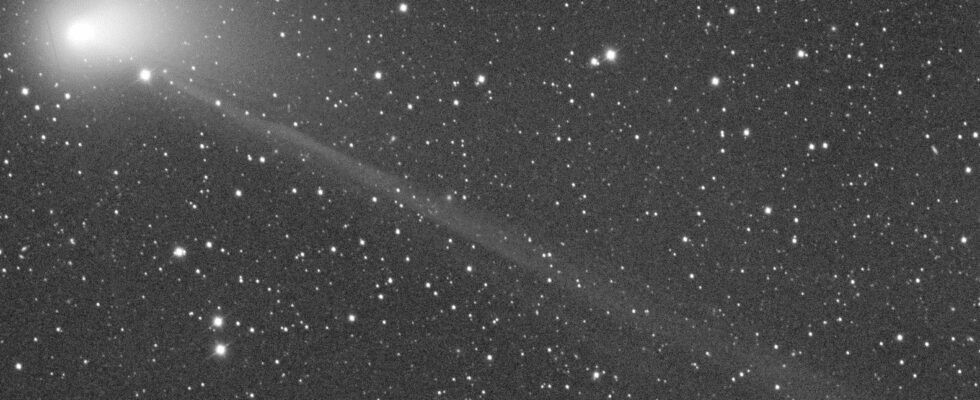You still need some equipment (binoculars or telescope) to observe C/2022 E3 and its beautiful green glow approaching the Sun. That comet should animate the news with some magnificent photographs to come… Before leaving for the depths of the Solar System. Next pass? In 50,000 years.
If it were just a little bit brighter, we could see it almost all night.
A beautiful dirty snowball
As much to warn you, the night when you want to get up a little earlier to have time to observe C/2022 E3, there will be clouds: so plan two or three attempts! There is nothing like it, however, to show off the new telescope you have received, your binoculars or simply for a souvenir or a nice photograph of this new comet. You would not be the first: the pictures are flourishing on the various networks, since for a few days and weeks, its magnitude has been decreasing and it is more and more visible. C/2022 E3 is its little name, we should also add the particle (ZTF) for Zwicky Transient Facility, the observatory in which we find the specialized telescope Samuel Oschin. It was he who detected the comet on March 2 last year, but there were only a few instruments in the world capable of photographing it. Since then, it has been 10,000 times brighter!
See you in 50,000 years, same day, same time…
Until January 12, it will continue to approach the Sun, but C/2022 E3 is unlikely to disintegrate completely like others before it, because it will remain at a distance of 1.1 Astronomical Units (164 million miles anyway) from our star. Moreover, given its trajectory, the researchers have estimated that it has already plunged at least once into the Solar System 50,000 years ago, the time it takes to travel its ellipse. The story does not say if the Neanderthals took advantage of the spectacle.
How about we go out tomorrow at 5 a.m.?
On February 2, C/2022 E3 will pass its closest point to Earth, safely 44 million kilometers away. The best opportunity to observe it will therefore be in the second half of January! According to Nicolas Biver, astronomer at the Paris Observatory quoted in Le Figaro, the comet should slowly evolve by then between the Little and the Big Dipper, two constellations among the easiest to spot and currently visible between midnight and sunrise. day ! Will it be visible to the naked eye in this period as Neowise was? It is possible, but the evolution of comets is not easy to predict. Maybe in exceptionally clear skies, but it will never be as easy as with simple binoculars or a small telescope. And if, like us, you are lazy, there are still the photos of others: they are sublime.
Source: https://earthsky.org/astronomy-essentials/new-comet-might-get-bright-enough-for-binoculars/

3